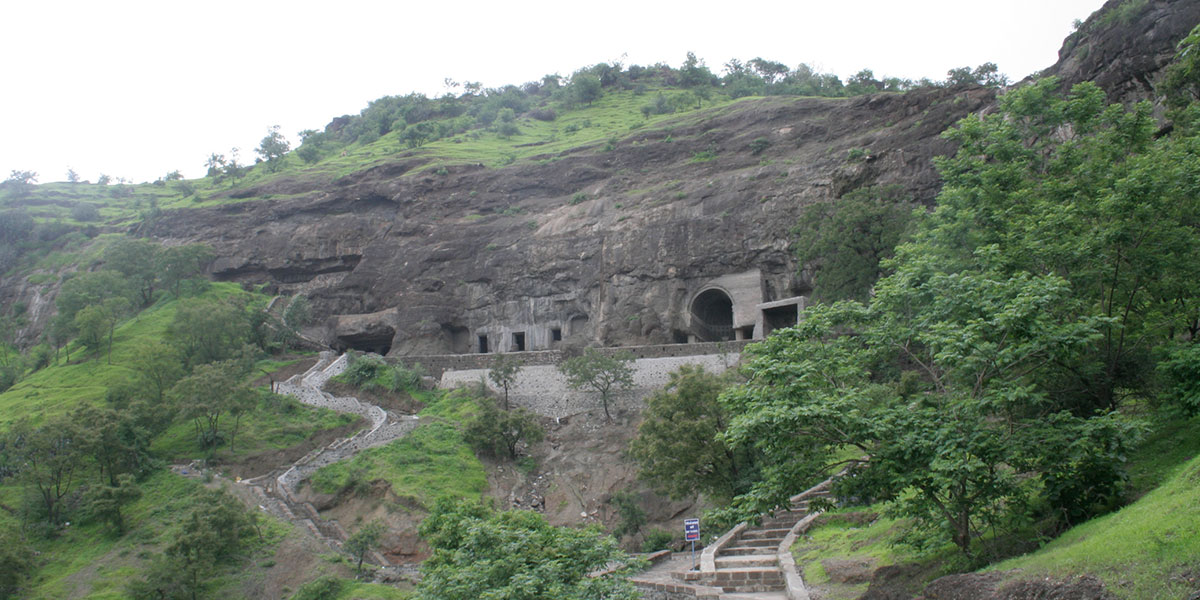Aurangabad Caves
The Aurangabad Caves are three groups separated by each other by a distance of nearly a kilometer. All caves belong to the Buddhist faith. The third group is left unfinished and moreover appears like natural caves and inaccessible. Among first group Cave 1 is (6th century A. D) and Cave 2 were monasteries dedicated to Mahayana Buddhism. Cave 3, consists of a pillared verandah with a chamber at each end, a hypostyle hall with two cells and one pillared chapel at each side, a pillared antechamber leading to a sanctum at the back. Cave 4 is a Hinayana chaityagriha datable to circa 3rd century A. D. It has a rectangular hall with an apsidal arrangement of pillars (broken) dividing into nave and side aisles. The high cylindrical drum and bulbous dome are placed at the rear side of the hall. Cave 5 is a small monastery of Mahayana faith datable to circa 5th century A.D. In Group 2, Cave 6 has combined characteristics of a monastery and a temple (7th -8th C.A.D.) belonging Vajrayana faith. The pillared verandah (broken) consists of a sanctum with its antechamber in the centre, surrounded by a passage with cells on each side and two in the back. The Buddha image in the square sanctum housing is in preaching attitude with kneeling devotees. Cave 6 (a) is small cave, comprising few later sculptures in form of Ganesha is flanked by Kali and Durga, Saptamatrika with Virabhadra Shiva. On the Eastern wall the figures of Lord Buddha carved in bold relief. Cave 7 is consists of a pillared verandah flanked by pillared chapel, square sanctum in the center, surrounding by a circumambulating passage with three cells in each side and two in back. The entrance door of the verandah has Avalokiteshvara as savior as the Asamahabhayas (the eight great perils). Inside of the sanctum on the Western wall is a beautiful composition of a dancing female in the midst of seated female musicians playing different musical instruments. Cave 8 was intended to be a double storey monastery but the work was stopped after excavating unfinished cell in upper floor. Cave 9 contains two excavations, which are marked as 9 and 9a both of which are incomplete. On the Western wall of the verandah, Buddha is carved in Mahaparinirvan-mudra.





